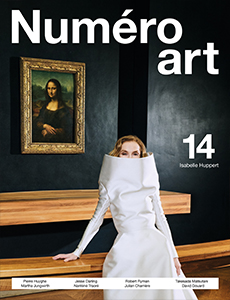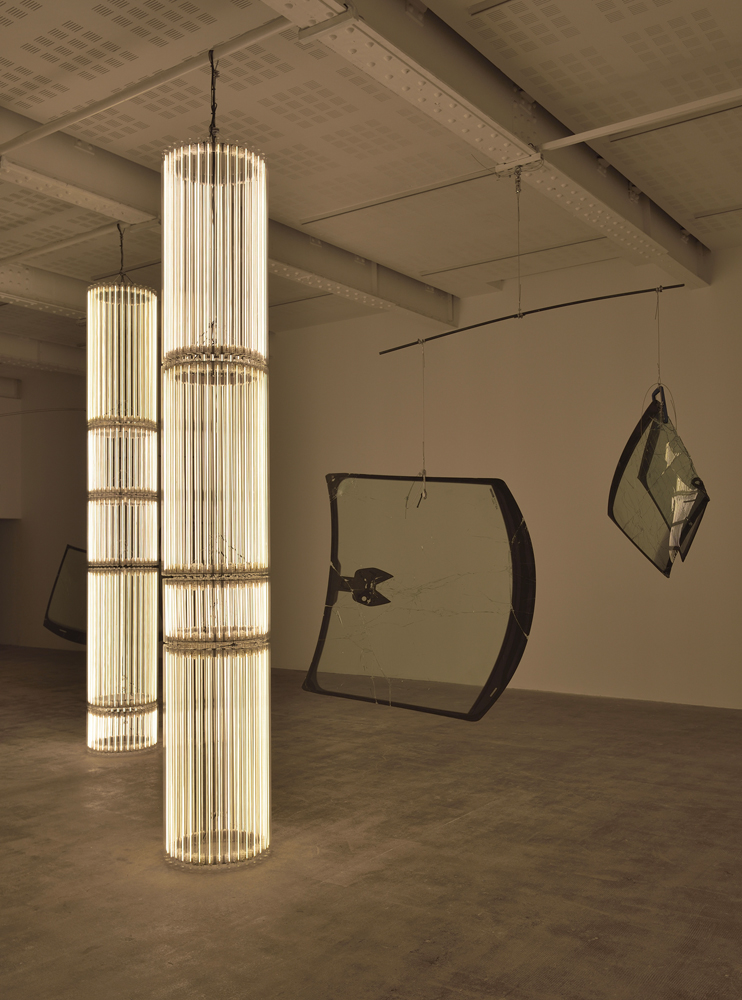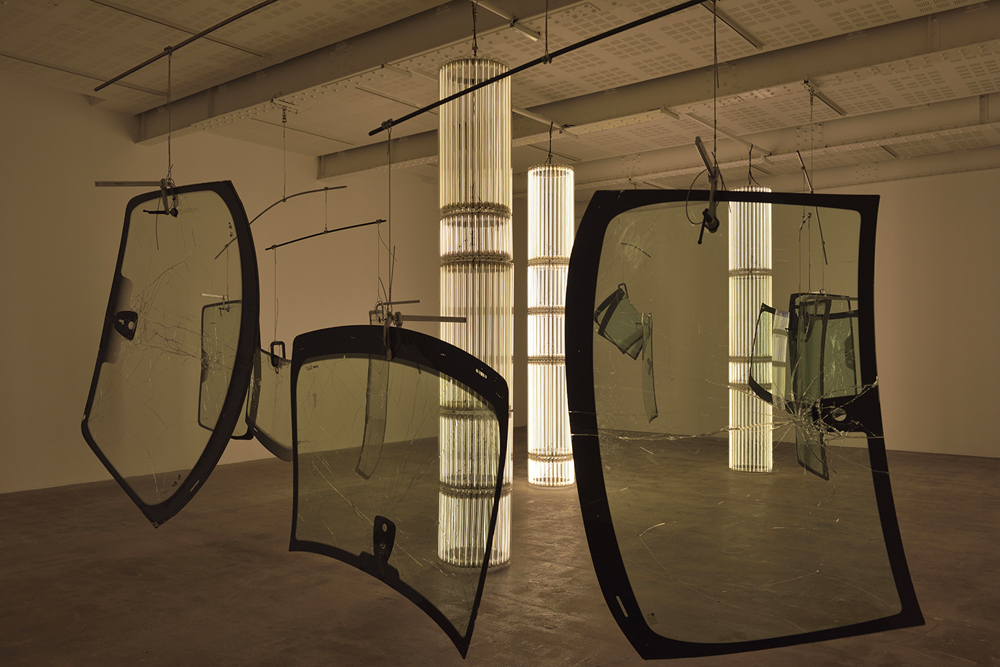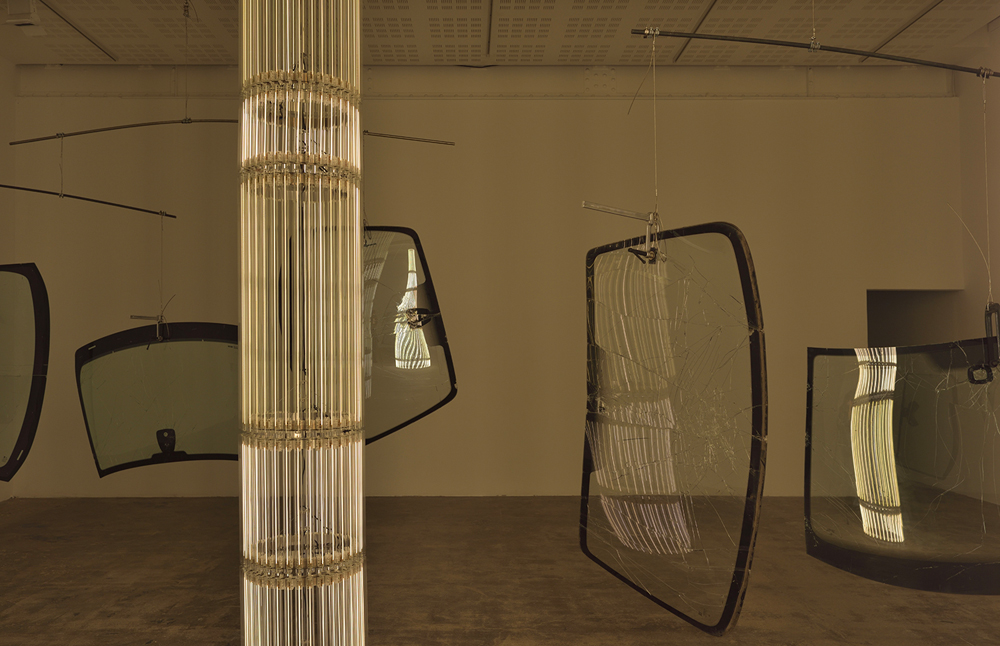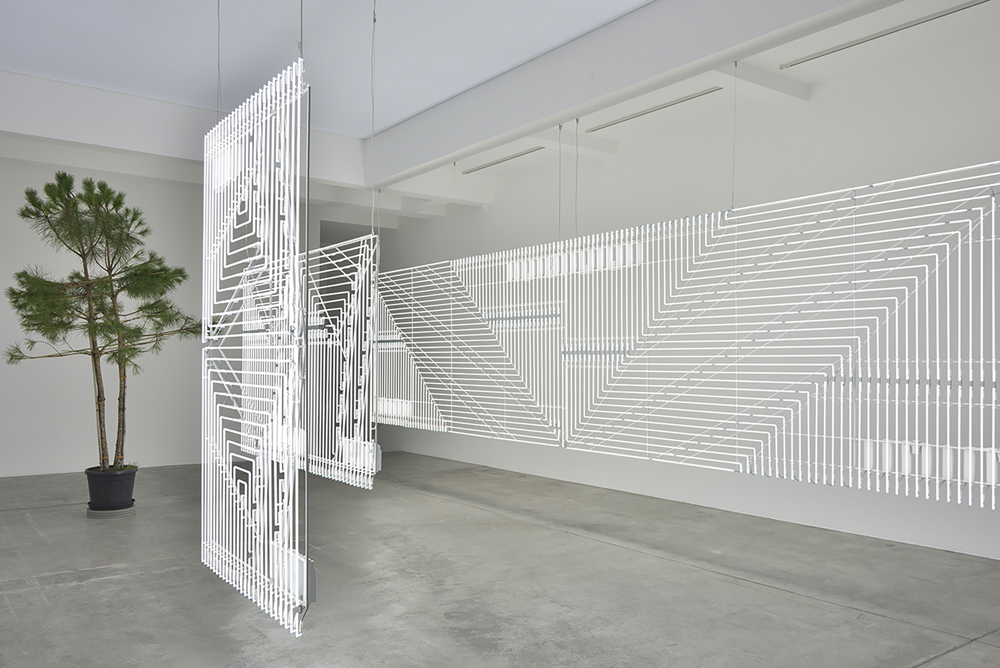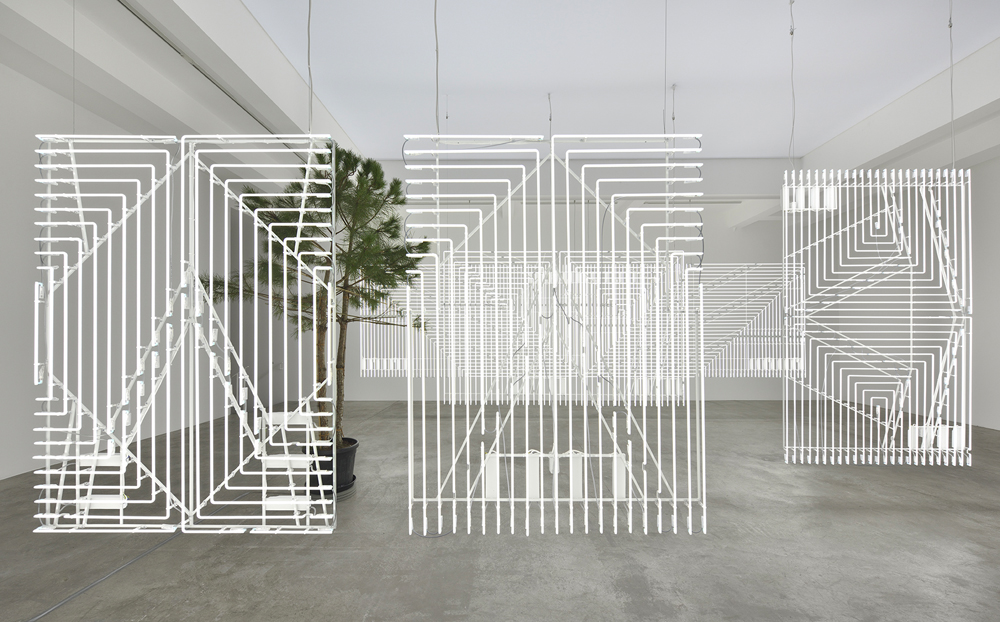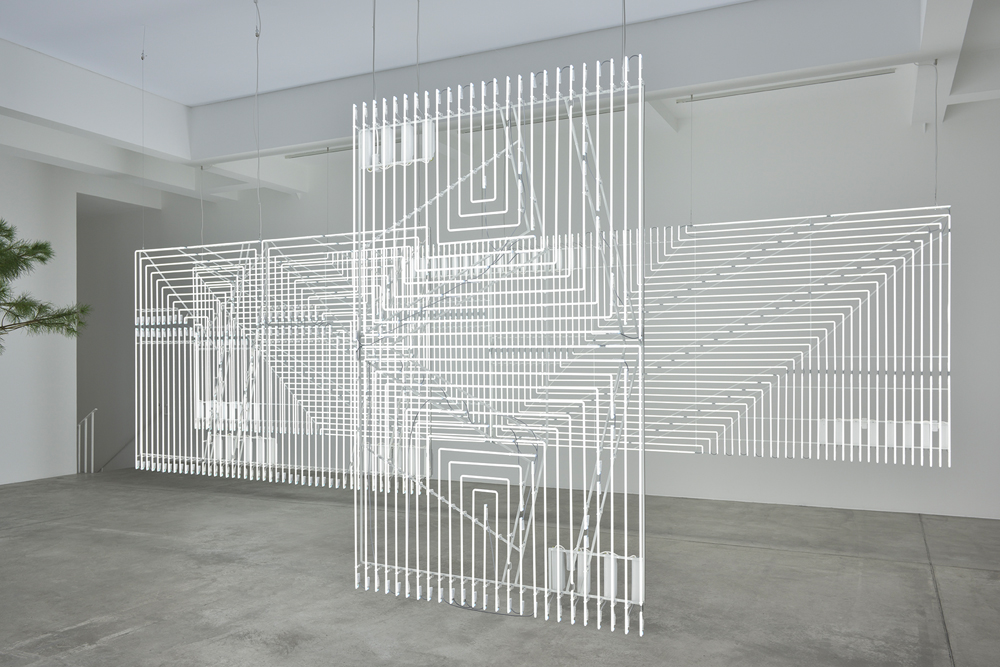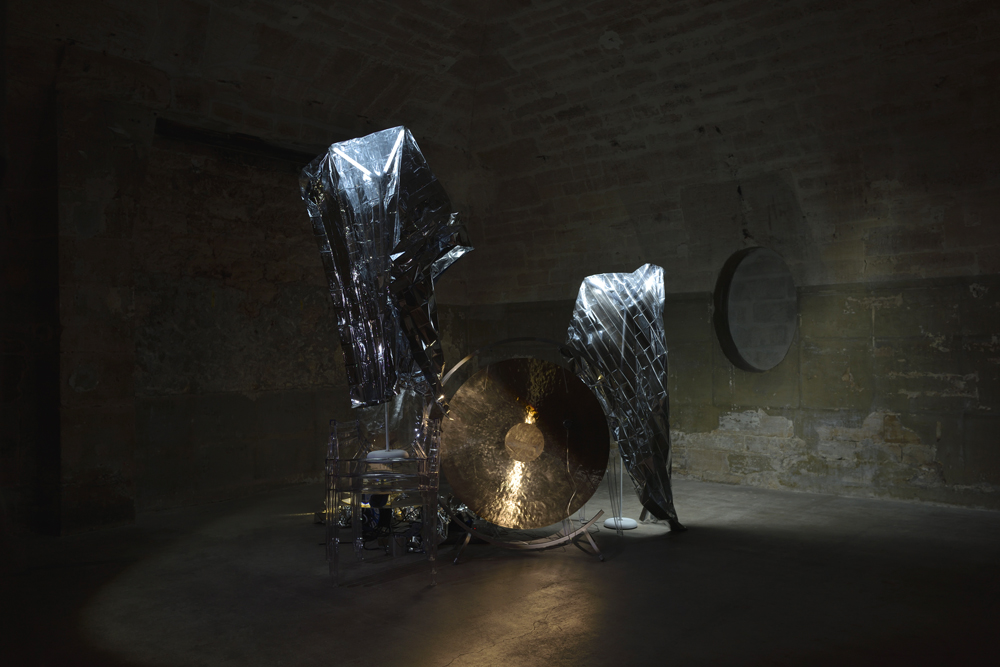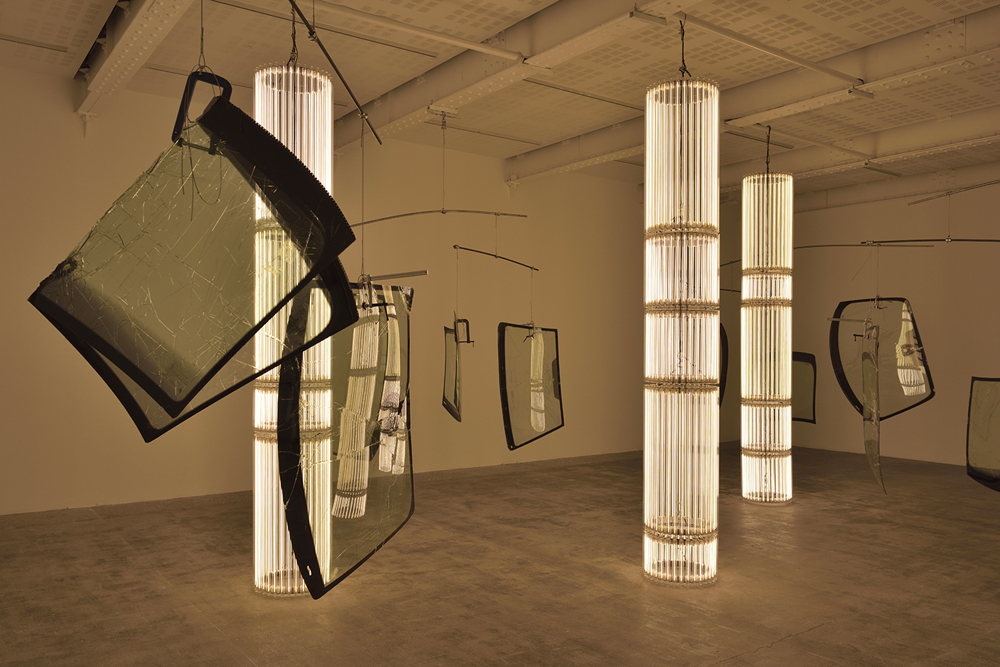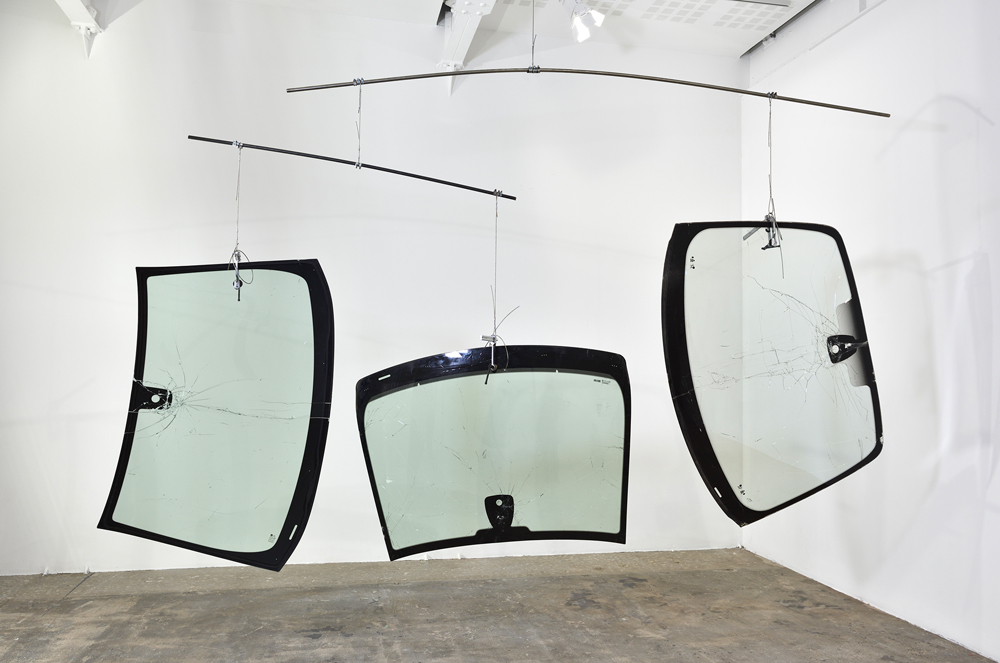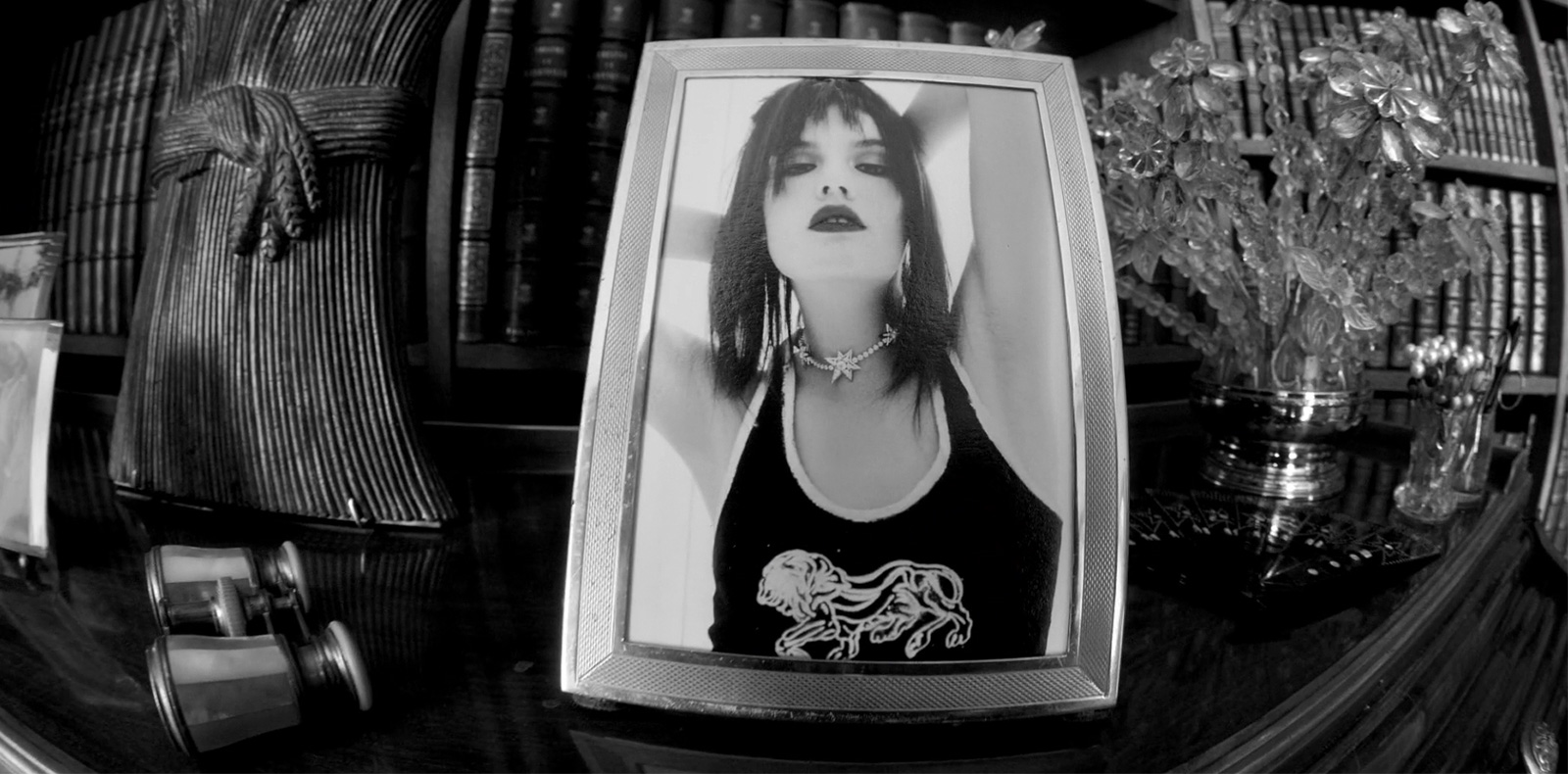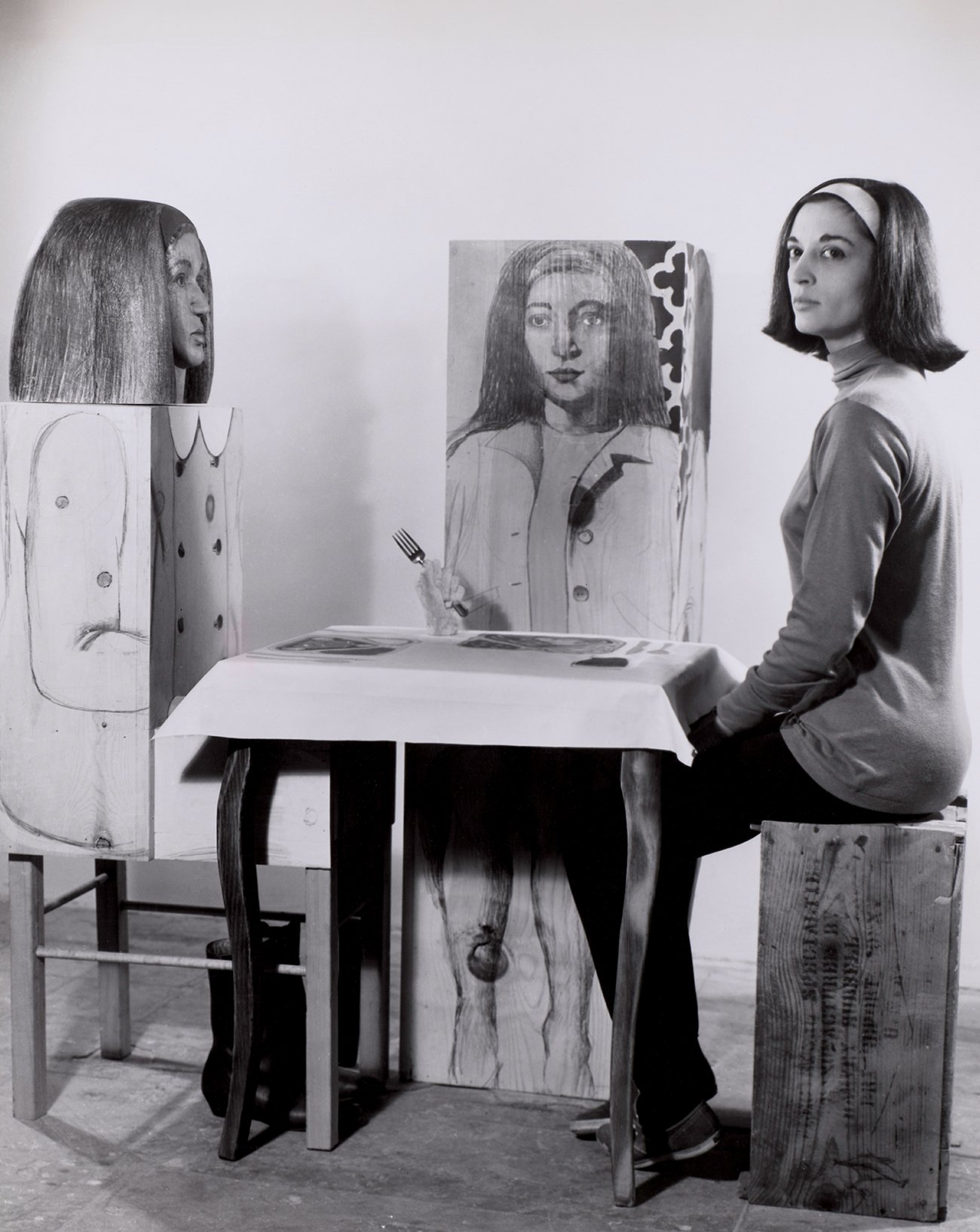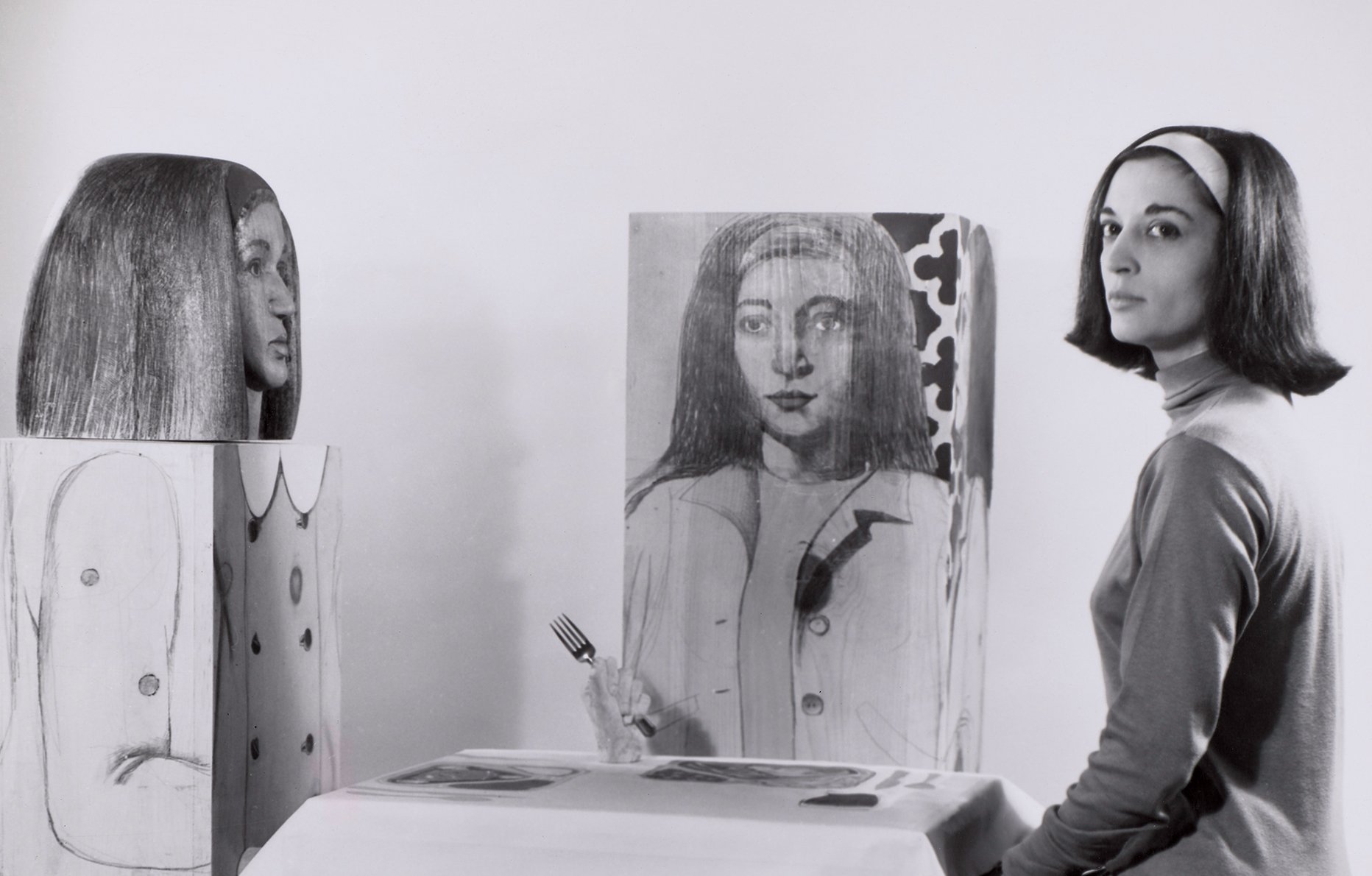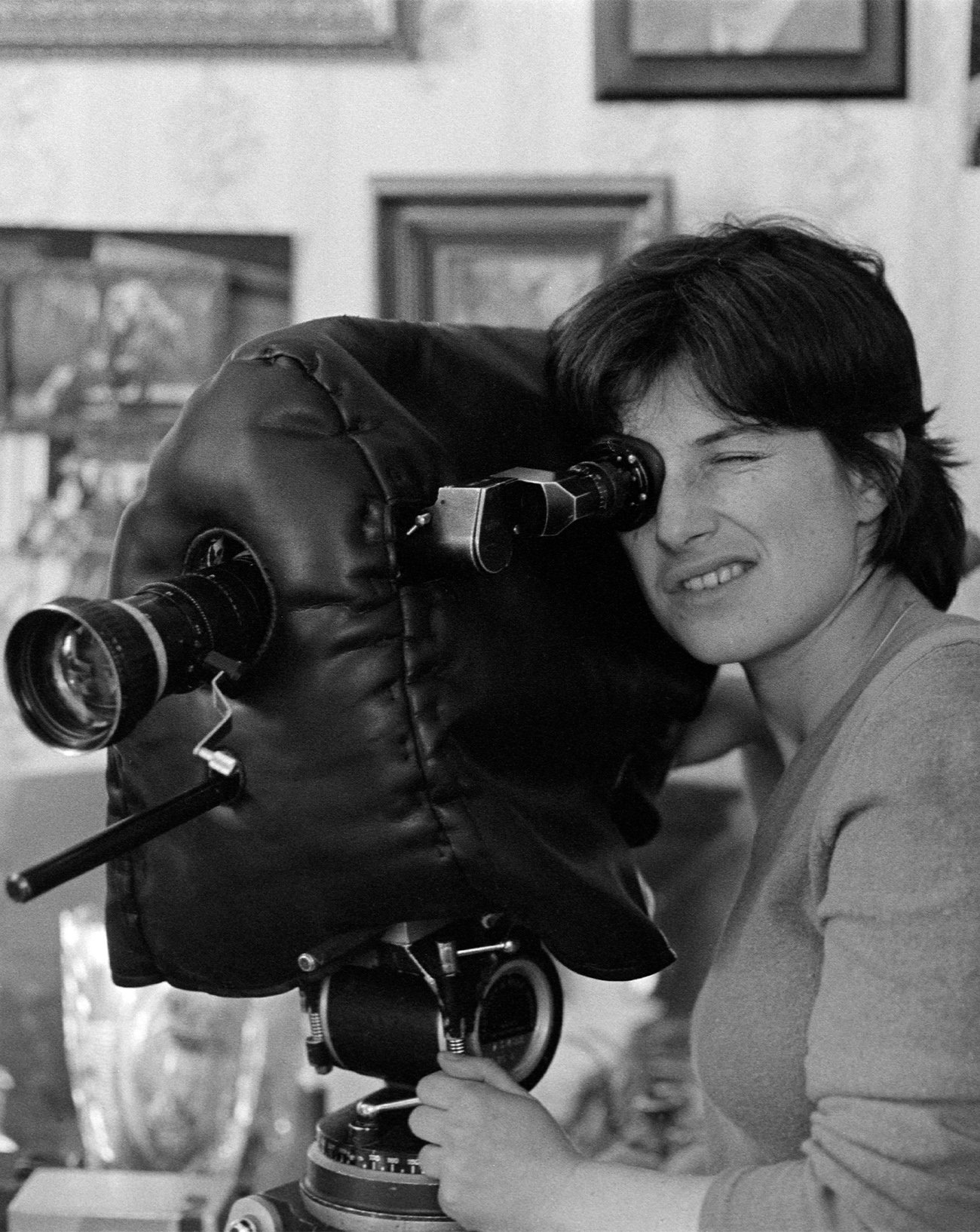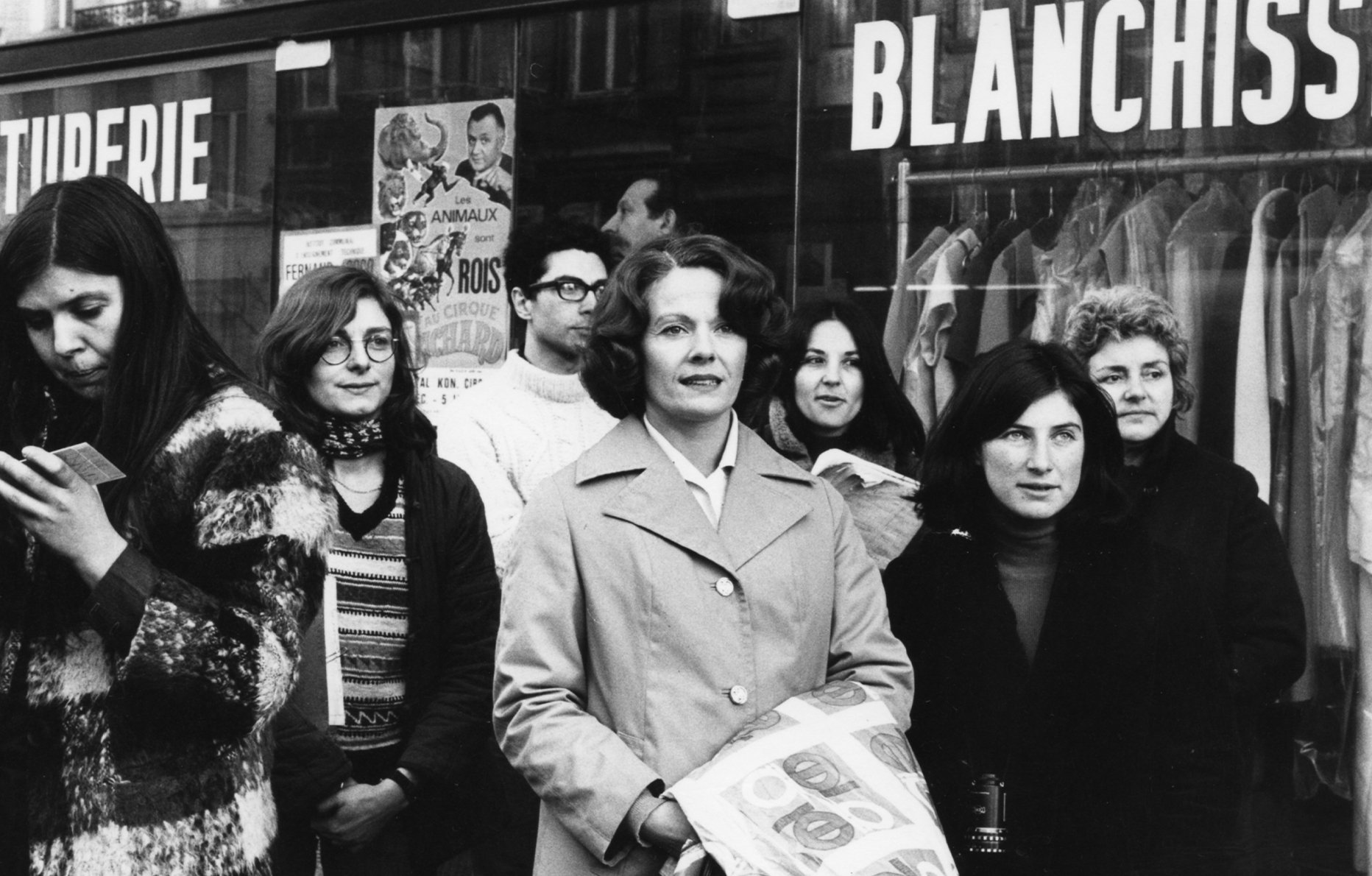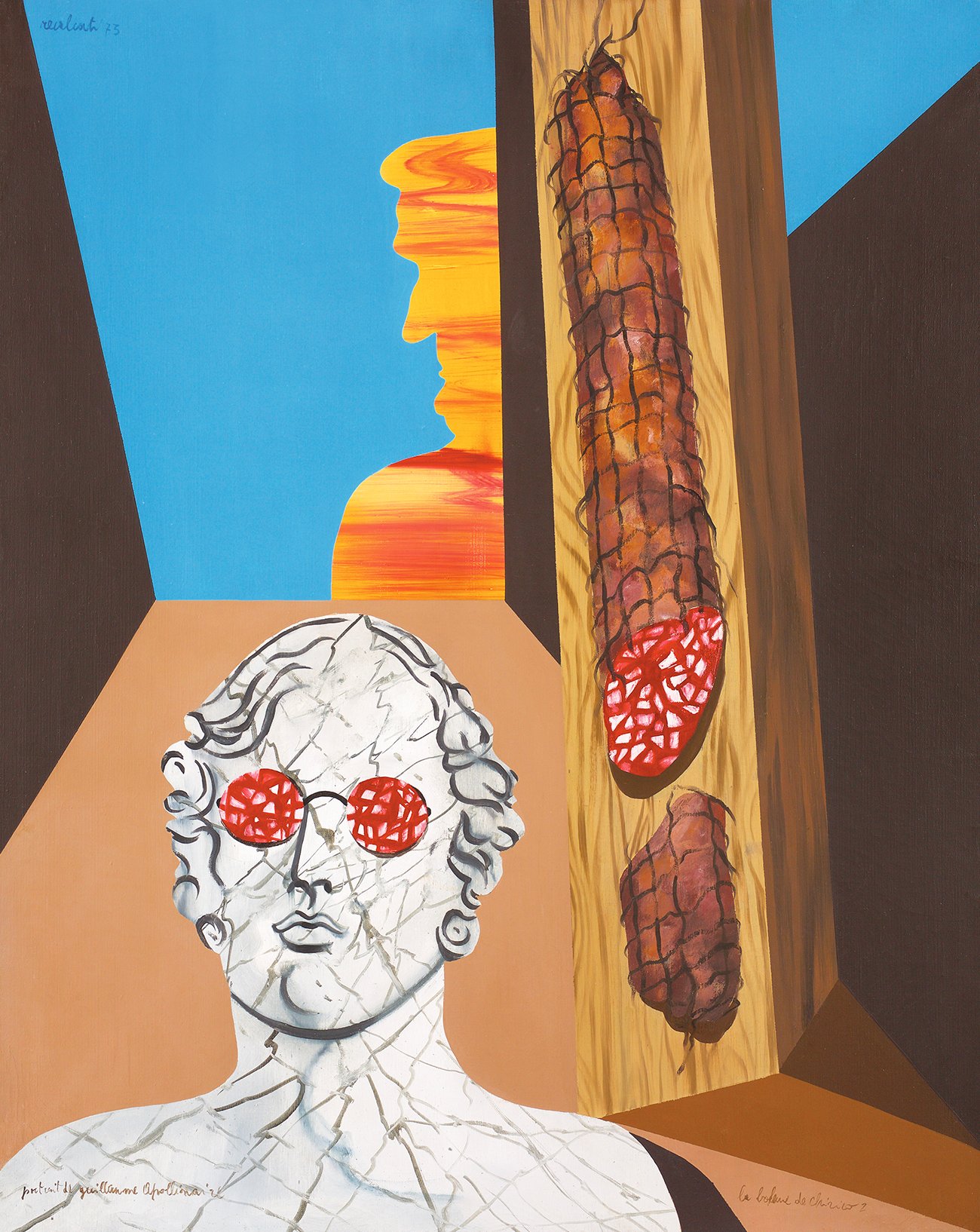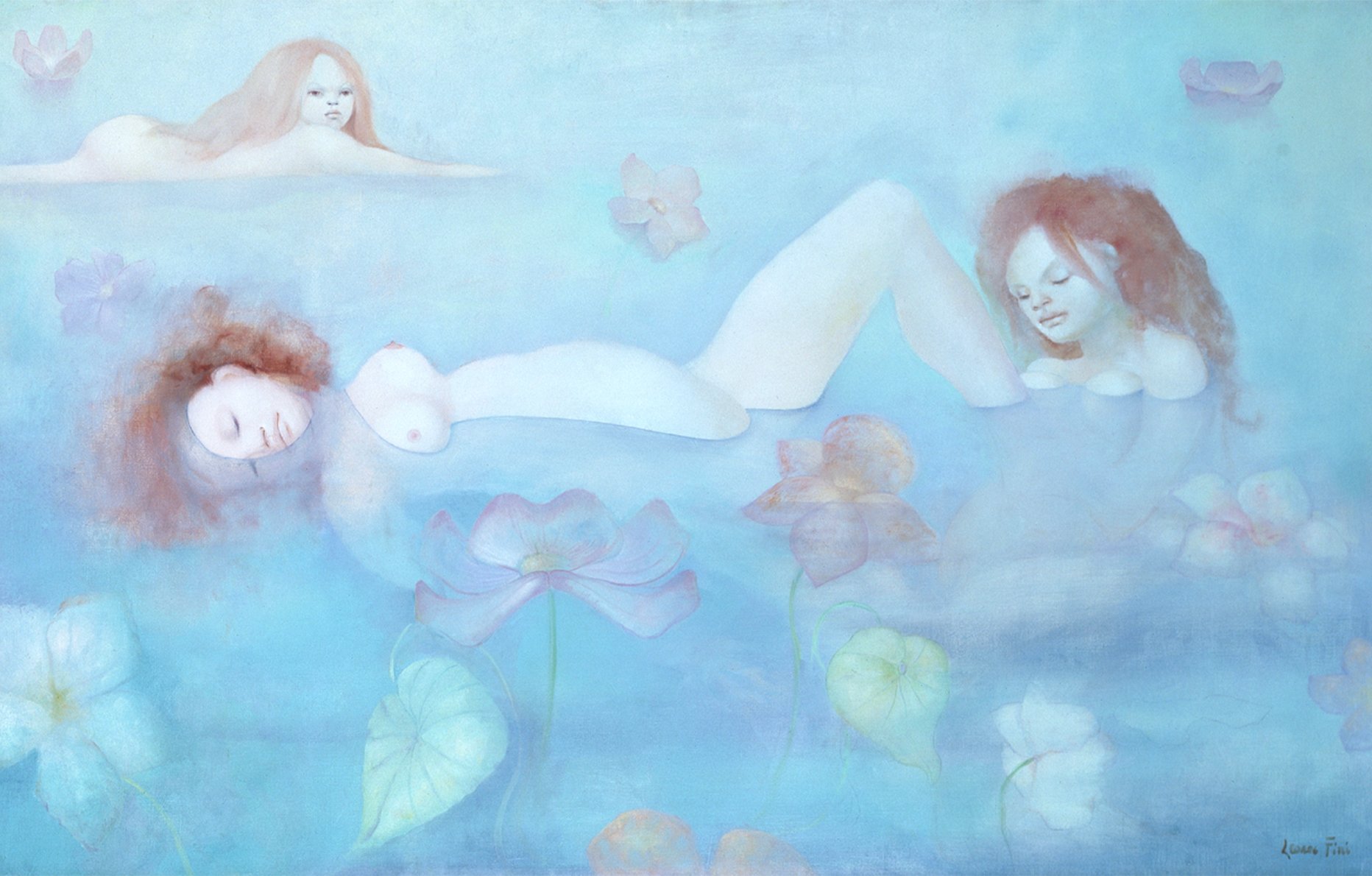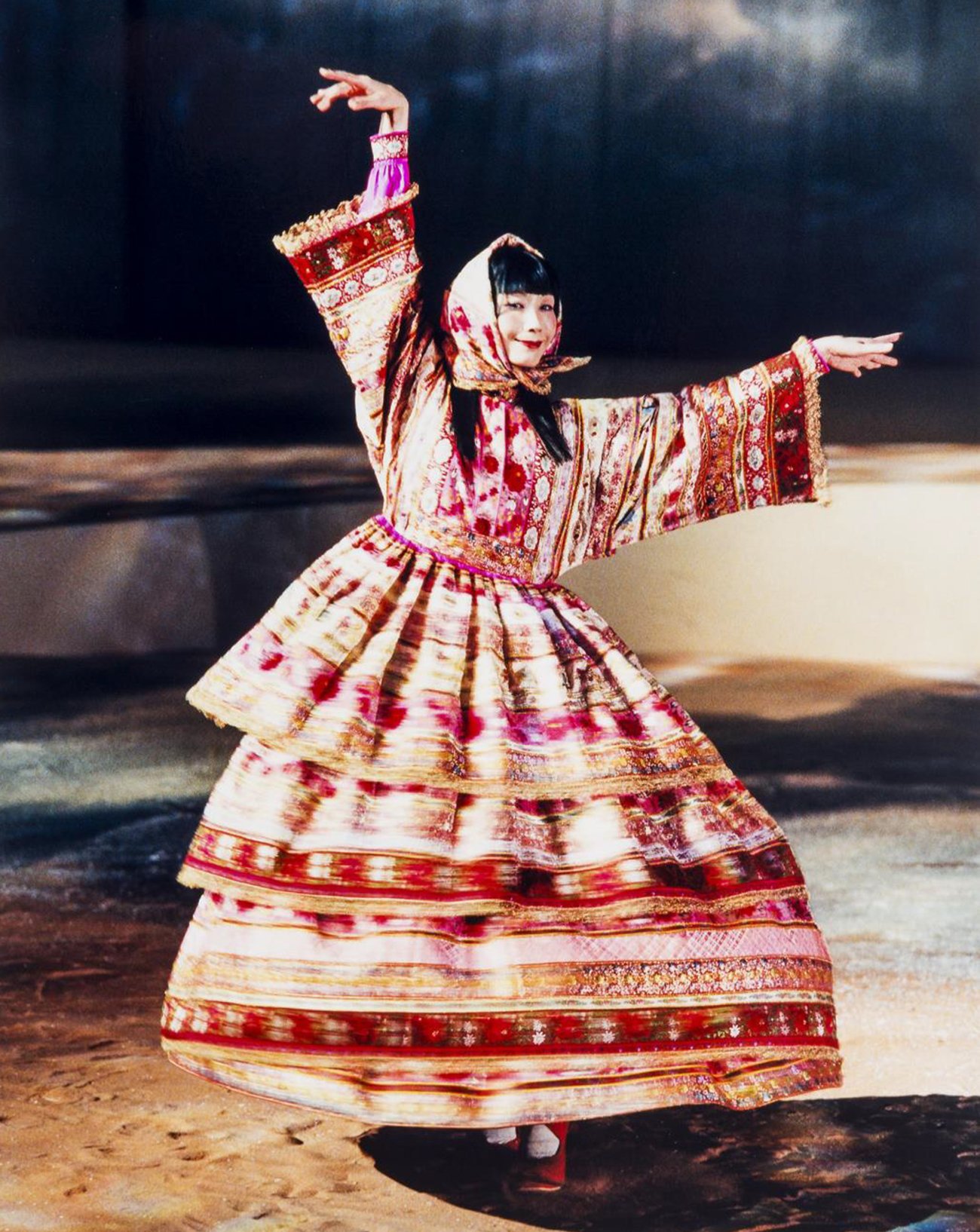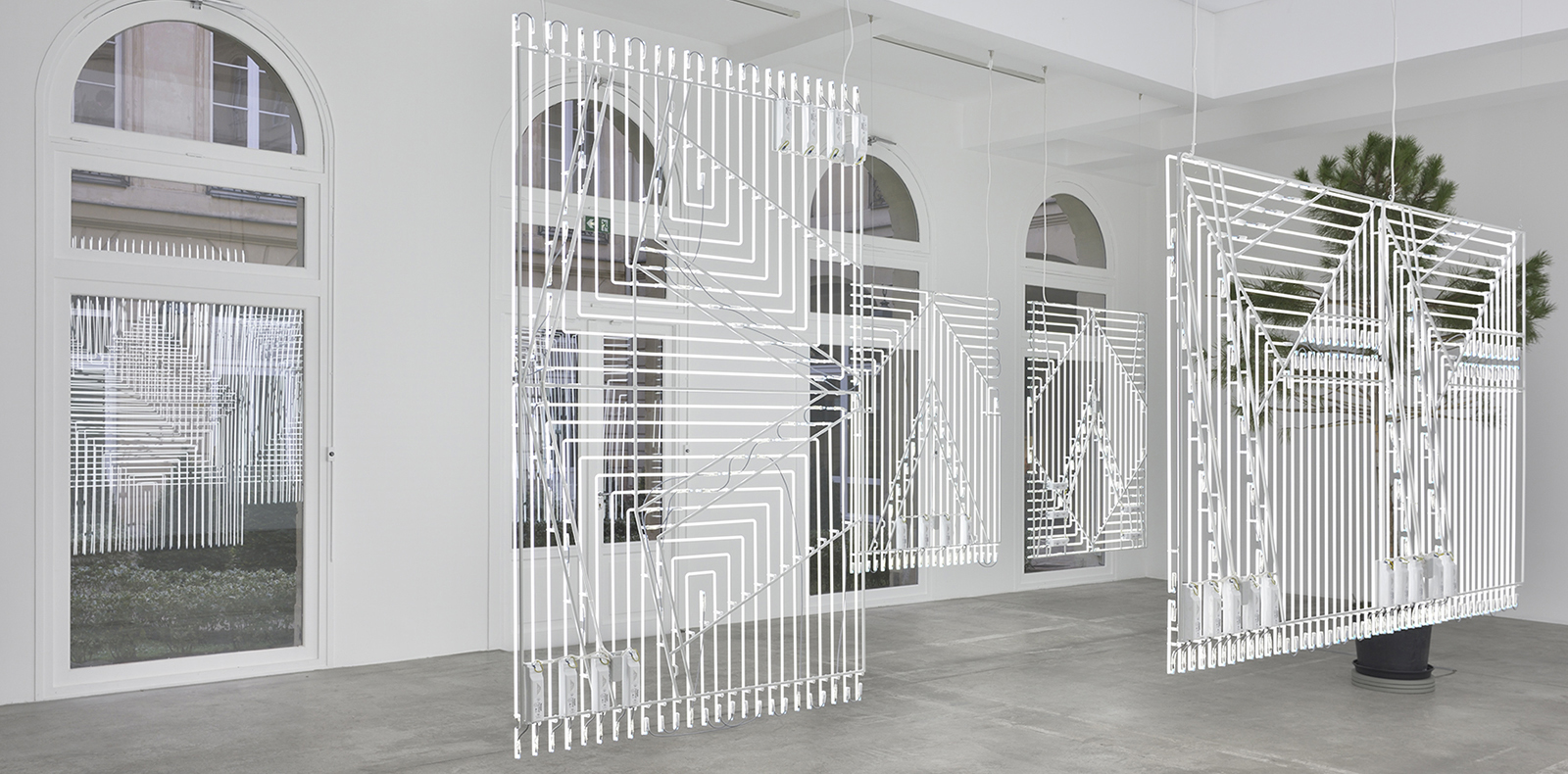
1
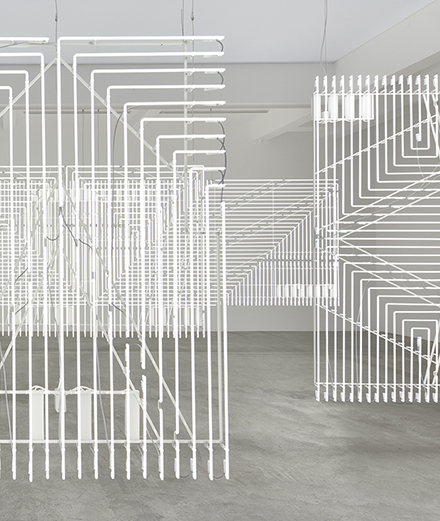
1
Cerith Wyn Evans’ luminous ballet at the Marian Goodman Gallery
With Marian Goodman representing himself, Cerith Wyn Evans is currently showing two solo exhibitions at the gallery – the first one in New York and the second one in Paris. In the Parisian space, the Welsh artist keeps enriching his luminous and poetic work, and conducts a multisensory ballet punctuated with several tributes to his elders, Frank Stella and Marcel Duchamp.
By Matthieu Jacquet.
Cerith Wyn Evans: three decades of conducting light
Milan, late October 2019 – At the Pirelli Foundation, visitors discovered seven 20-meter-high luminous columns rising in the giant space of the HangarBicocca. These impressive sculptures made of vertical LED glass tubes immediately hinted at ancient architecture, and especially at the Doric order, the oldest style found in Greek temples. Yet the show didn’t stop there as, in the darkness of the former warehouse, the artworks were gradually switched on and off to create a captivating visual ballet for the viewer. It was with that cathedral-inspired installation that Cerith Wyn Evans introduced his major solo exhibition in the Italian institution, asserting from the start the stakes of his practice – exploring the links between light, sound, and space to write a multisensory poetry. More than three years later, the Welsh artist once again presents a smaller version of these columns in the basement of the Marian Goodman Gallery in Paris, which is dedicating a solo exhibition to him until February 25th, 2023, hand in hand with the gallery’s branch in New York until March 4th. Thanks to new artworks designed for the exhibitions, his artistic practice is enriched by several explicit references to artists who have made an impression on him, from Frank Stella to Marcel Duchamp.
Cerith Wyn Evans has been drawing with light for almost thirty years now. Although the discreet British artist born in 1958 began his career in the 1970s with experimental short films, neon lights have since become one of his main and most notorious media of expression to this day. Mesmerized by the illuminated shop signs, the artist has utilized neon lights throughout his career to draw abstract lines in empty spaces, to write poetic phrases flirting with aphorisms, or to literally light up imposing chandeliers. In the first room of the exhibition at the Marian Goodman Gallery, some of the new luminous assemblages he started in 2021 respond to each other. But here, the neon lights are aligned on a flat surface and form floating staggered canvas of light. Straight, oblique, and geometric, the superimposed lines seem to vibrate in the viewer’s eyes. The stage is set. Behind this seemingly arid frame and industrial material, Cerith Wyn Evans breathes his soul into the abstract, letting the neons come to life according to the different points of view and to the variations in intensity and colors.
Nods to major artistic figures, from Frank Stella to Alexander Calder
The keenest eyes familiar with 20th century painting are likely to notice that the patterns drawn by these luminous structures explicitly refer to Frank Stella’s Black Paintings, a series of paintings made by the American artist between 1958 and 1960. In his new art pieces, Cerith Wyn Evans translates the expressionist painter’s black stripes separated by white lines into neon lights. The old opaque canvas now becomes an open, porous surface in which viewers are invited to let their eyes wander between the thin luminescent cylinders in the exhibition space and in the building’s inner courtyard, visible through the large arched windows. The Welsh artist’s skillful pastiche allows him to both embrace and offer an adaptation of the original artwork.
The first basement room highlights his approach with a dozen cracked windscreens floating in the air thanks to wires placed around the light columns. Reminding Alexander Calder’s signature sculptures of the same name that he developed in 1932, these “mobiles” swap the plain metal pieces for these laminated glass car elements salvaged from a rubbish dump near Paris. Just like the unfinished work Grand Verre created by French artist Marcel Duchamp between 1915 and 1923, Evans intents on preserving the frailty of the delicate material. These new readings of “ready-mades” evoking television screens with their rectangular shape and bluish color now meet the architectural canons of Ancient Greece and joyfully play with anachronisms in a spatial dimension.
An exhibition written like a music score at the Marian Goodman Gallery
As the good video artist he is would coordinate sound and light, Cerith Wyn Evans has taken on the role of conductor of lighting. The exhibition can be read as a spatial music sheet, where the visitor’s path is meticulously controlled by the artist and seems to mirror the lines traced by the artworks. Evans’ pieces are more akin to Jesús-Rafael Soto’s colorful installations, which invite the visitor to wander between them, than to Dan Flavin’s neon lights, which are often displayed against a wall, motionless. A sense of theatricality keeps unfolding with the combination of the LED columns and mobile windscreens, which tenfold their luminous melody through their endless reflections. The artist’s magic goes even further with the reversal he operates throughout the exhibition. While the lights of the static panels come to life as the visitor walks across the room of the ground floor, the works activates themselves around the immobile viewer in the basement, thus reversing the gravitational center of the exhibition all of a sudden.
As usual, the Welsh artist does not hesitate to sow seeds of doubt in the visitor’s mind with the presence of few grey areas. A pine tree in a pot turning on itself, a gong wrapped in a silver blanket, and transparent chairs punctuated by the beat of piano compositions. If the Paris exhibition is entitled “No realm of thought…”, its New York counterpart may be one key to the enigma with its title “…no field of vision”. The phenomenological approach of the artist is clear and fully assumed. Rather than locking up his artworks into a discourse, Cerith Wyn Evans offers them to the viewers’ consciousness and sensory perception, like independent organs in the here and now of their unique experience.
Cerith Wyn Evans, “no realm of thought…”, open until February 25th, 2023, at the Marian Goodman Gallery in Paris 3e, and “…no field of vision”, open until March 4th, 2023, at the Marian Goodman Gallery in New York.
